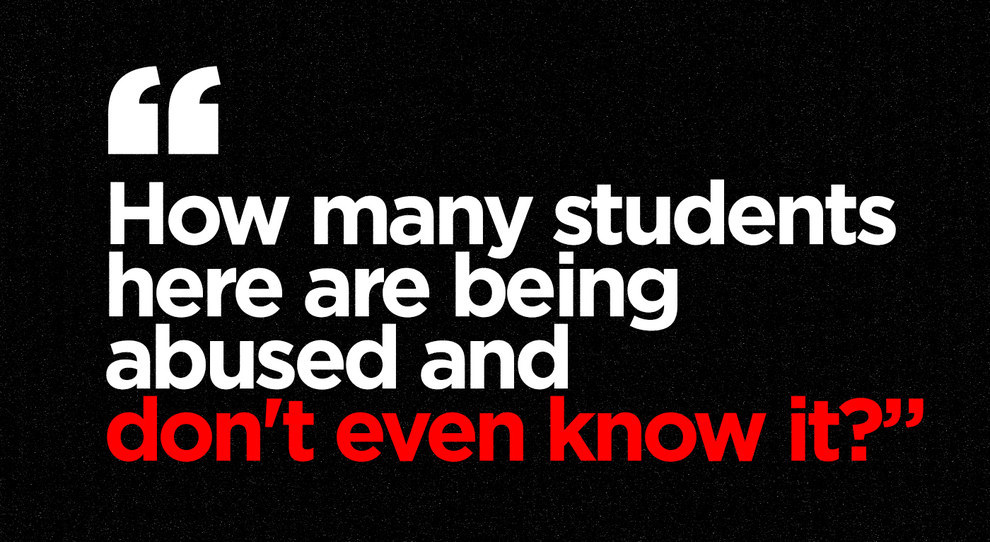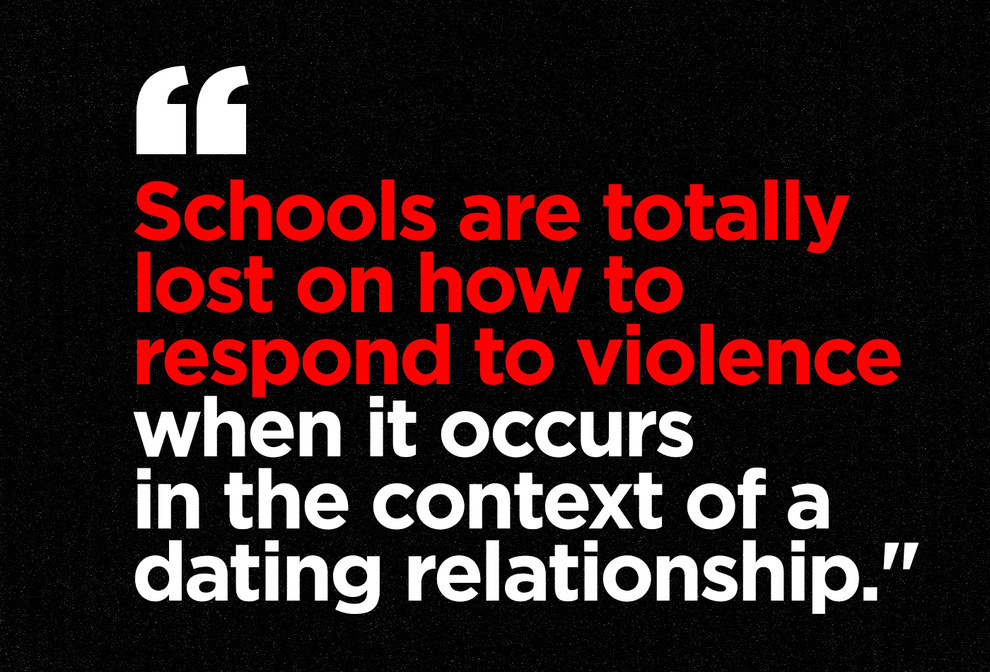Domestic Violence Voices
 Shared by
Shared by

Olivia Ortiz met her first boyfriend when she was an 18-year-old sophomore at the University of Chicago. She said she set “pretty strong sexual boundaries” with him from the start: He was a 21-year-old senior, but he was also her first kiss, and she told him she didn’t want to go any further than that until she felt comfortable. He ignored her and pressured her for months, she said, and often tried to take advantage of her when she was drunk or sleeping. Sometimes, Ortiz said, she would wake up to him touching her while she had been unconscious.
The two dated from fall 2011 into the following spring, when Ortiz told a friend that her boyfriend touched her and made her touch him when she didn’t want to. “That’s rape,” her friend told her. But it was also the only relationship Ortiz had ever known. It wasn’t until he broke up with her that summer that Ortiz confided in a mentor on campus. She suggested Ortiz speak to the dean of students, who offered to set up an informal mediation between Ortiz and her ex.
Informal mediations are prohibited under federal gender equity law Title IX, as well as the University of Chicago’s own policies, even on a voluntary basis, “in matters involving allegations of sexual assault.” But Ortiz didn’t know that, and the dean who suggested the process didn’t tell her.
Universities all over the country are under fire for how they handle sexual assault under Title IX, the federal law that prohibits discrimination on the basis of sex in any federally funded education program. The 1972 law was best known for its impact on high school and college athletics until 2011, when the Education Department sent a “Dear Colleague” letter to schools reminding them that they needed to be investigating sexual violence cases under Title IX, too. Since then, campus activists have joined together across the country to spread awareness, prompting bipartisan legislation, a White House task force committee, and federal investigations into more than 100 schools nationwide.
But few people know that Title IX also protects students from domestic violence, which includes physical and psychological harm. The next wave of Title IX activism, researchers and activists say, will focus on how colleges investigate allegations of and provide resources to students in abusive relationships. And it’s going to be just as complicated and contentious.
Some studies show that the oft-reported statistic that one in five women is sexually assaulted during college also applies to domestic violence, often called “dating violence” or “intimate partner violence.” Around 20% of college students report having experienced dating violence by a current partner, and college-aged women (16–24) experience the highest rate of dating violence than any other age group, according to the Justice Department. Studies also show that dating violence disproportionately affects the long-term health of women of color.
Even so, “schools are totally lost on how to respond to violence when it occurs in the context of a dating relationship,” said Dana Bolger, co-founder of Know Your IX, an activist group that has lobbied for dating violence to be taken seriously on campuses.
Activists have long felt frustrated that physical, emotional and psychological abuse is seen as secondary to sexual assault, unless a student is seriously injured or killed. That may be because college dating violence victims are often dismissed as being young and inexperienced, Bolger said. When people think of domestic violence, they think of marriage and children, not first-time relationships built over late-night fries in the cafeteria.
“Students may live in a different dorm than their perpetrator,” she said, “but that doesn’t mean their lives and education aren’t threatened.”

Student activists convinced the country to care about campus sexual assault. Can they do the same for domestic violence, which is just as common on college campuses?
No comments:
Post a Comment